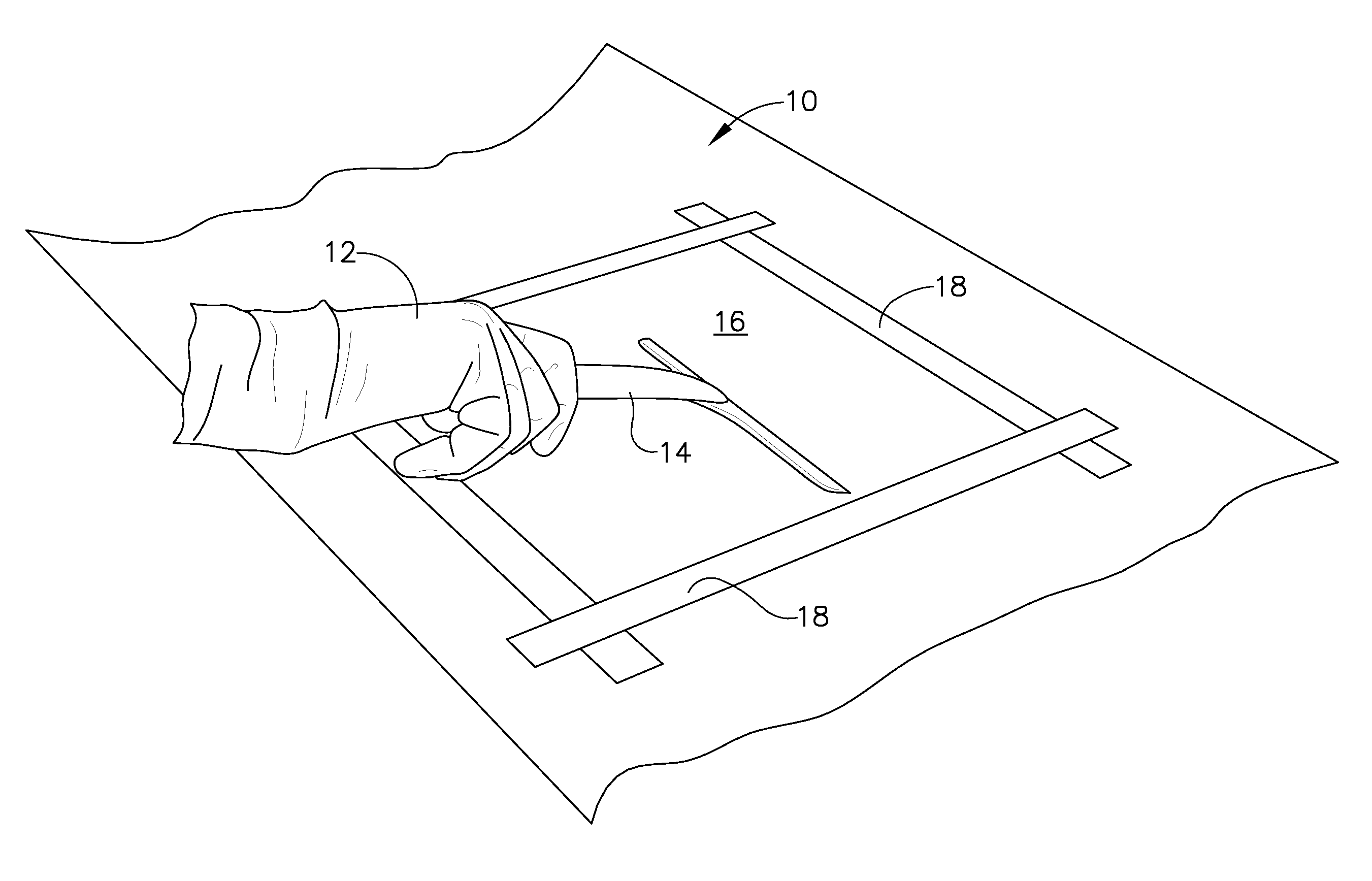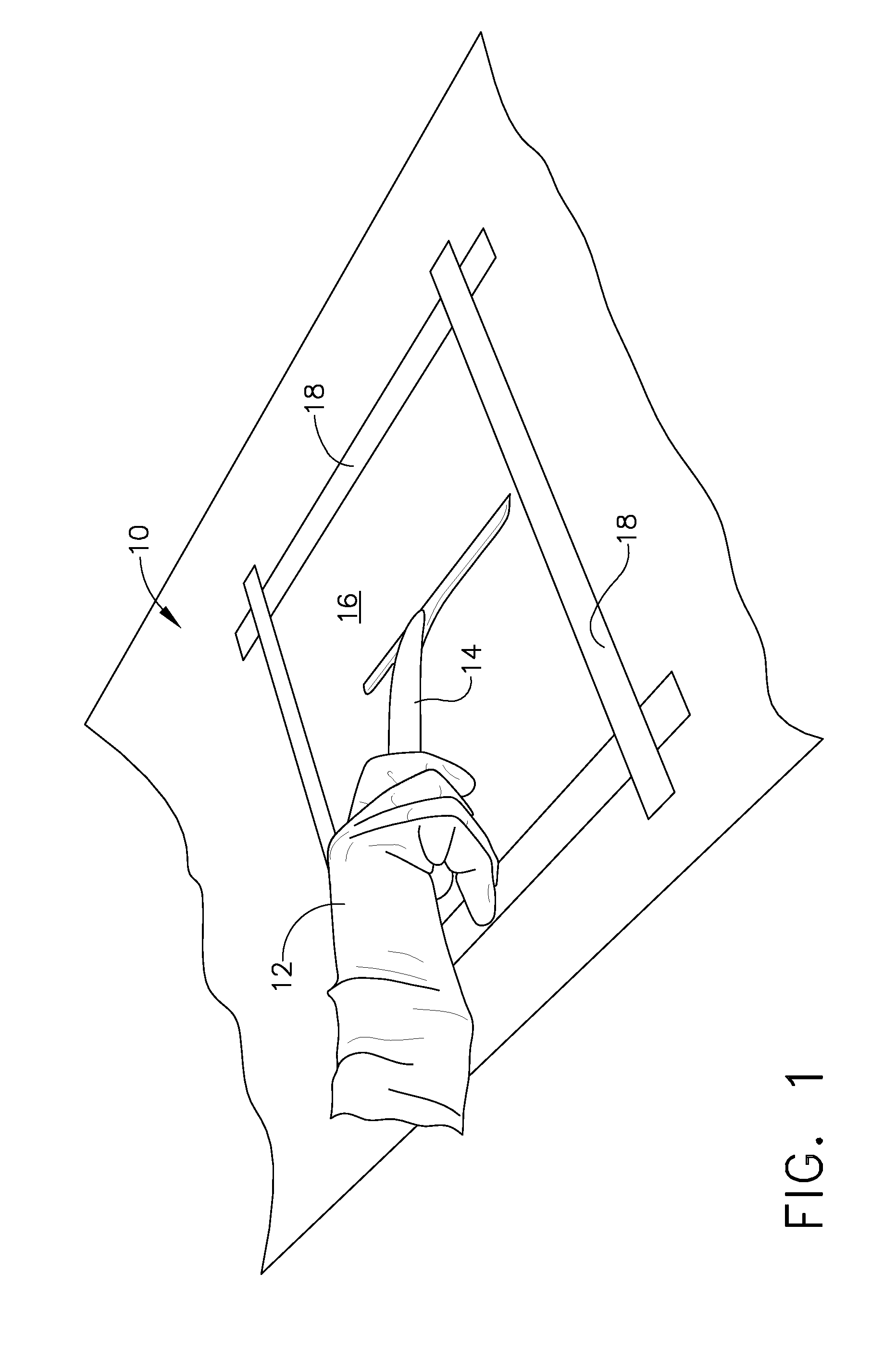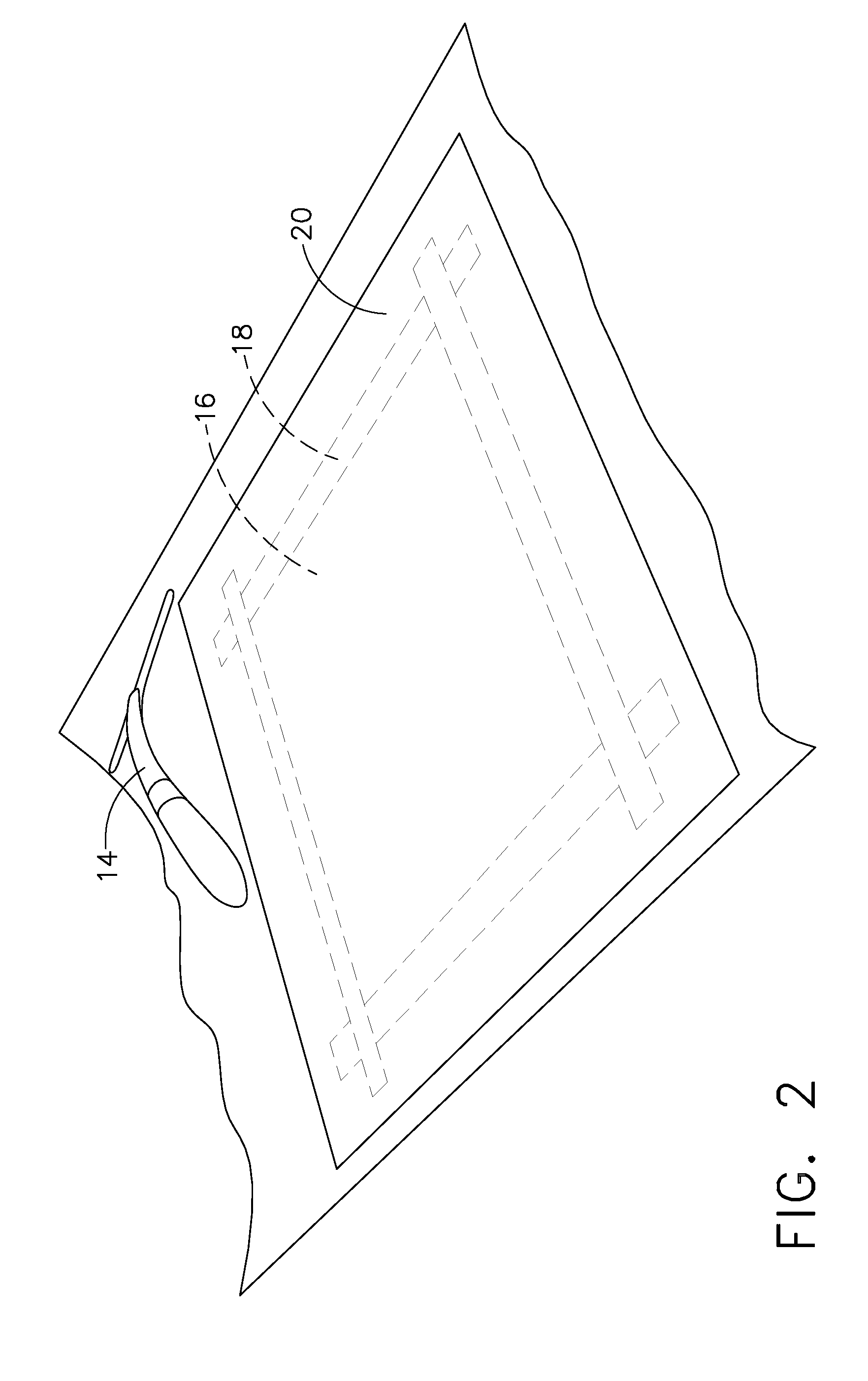Gelled adhesive remover composition and method of use
a gelled adhesive and remover technology, applied in detergent compositions, detergent compounding agents, coatings, etc., can solve the problems of environmental hazardous materials, time-consuming, expensive, inefficient, etc., and achieve the effect of reducing the effective vapor pressure of the solvent, prolonging the incubation period, and increasing the amount of vapor-pressure modulating agents
- Summary
- Abstract
- Description
- Claims
- Application Information
AI Technical Summary
Benefits of technology
Problems solved by technology
Method used
Image
Examples
example 1
Appliqué´ Adhesive Residue
[0039]A Hansen Profile was generated by determining the “Softening Index” (S.I.) for an array of solvents. The S.I. is a relative measure of the response of an adhesive residue to a set of standard solvents selected to represent a range of total Hansen Solubility Parameters (δt). Although certain chlorinated test solvents were used in this analysis, they are not preferred for use in the adhesive remover compositions of the invention because they present undesirable waste-disposal and safety issues. An adaptation of ASTM Standard Test Method D 4752-03 was used to determine the Softening Index for softening the residue from an appliqué system.
[0040]Briefly, an acrylic-based pressure sensitive adhesive residue was applied to a substrate made of a carbon-composite material, and then a predetermined quantity of several test solvents were applied to portions of the adhesive residue. A scraping tool, such as a metal spatula or knife, was used to scrape the adhesiv...
example 2
Tape Adhesive Residue
[0044]An adhesive remover composition for removing tape residue was prepared in accordance with the principles of the invention. The Softening Index for GORILLA TAPE® was determined using the method described herein above. See the “Tape” column of the Table, above. GORILLA TAPE®, a trademark of The Gorilla Glue Company of Cincinnati, Ohio, is a tape with a pressure sensitive adhesive comprising polyolefins, as well as natural and synthetic rubbers.
[0045]An excess of each test solvent was applied to a grid square and the number of even strokes of a scraping tool was counted to give a total removal of adhesive down to the cloth backing of the tape. The number of strokes required is the “Softening Index” for the test solvent. A plot of Softening Indices as a function of total Hansen Solubility Parameters for each solvent tested with GORILLA TAPE® is the Hansen Profile for this adhesive system, which demonstrates that the most effective solvents . The Hansen Profile...
PUM
| Property | Measurement | Unit |
|---|---|---|
| boiling point | aaaaa | aaaaa |
| viscosity | aaaaa | aaaaa |
| surface areas | aaaaa | aaaaa |
Abstract
Description
Claims
Application Information
 Login to View More
Login to View More - R&D
- Intellectual Property
- Life Sciences
- Materials
- Tech Scout
- Unparalleled Data Quality
- Higher Quality Content
- 60% Fewer Hallucinations
Browse by: Latest US Patents, China's latest patents, Technical Efficacy Thesaurus, Application Domain, Technology Topic, Popular Technical Reports.
© 2025 PatSnap. All rights reserved.Legal|Privacy policy|Modern Slavery Act Transparency Statement|Sitemap|About US| Contact US: help@patsnap.com



